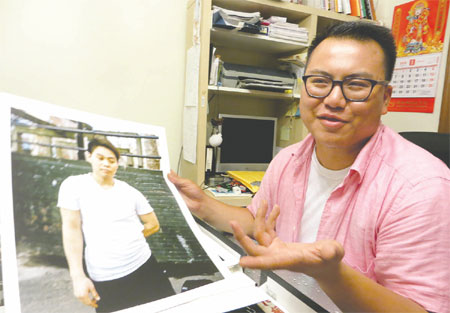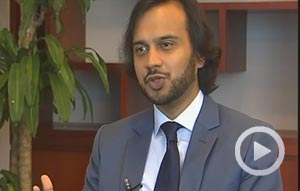Finding legacy with camera
Updated: 2013-07-19 11:29
By Caroline Berg in New York (China Daily)
|
||||||||
|
Anrong Xu talks about how he caught one of his photograph subjects in a tender, unguarded moment during the course of shooting his Chinatown handball court series. Caroline Berg / China Daily |
Anrong Xu spent the majority of his teenage life trying to ignore his Chinese heritage.
"I avoided Chinatown like the plague," the 23-year-old New Yorker said. "I was going through this growing pains phase where I didn't really want to be Chinese."
Then Xu enrolled in a photography class in high school and, because he had a job in Chinatown, the neighborhood became his first subject.
"It's like going back to where you're from and then realizing little things that you never realized when you've been away for so long," Xu said. "It took me a while to realize that you are who you are, and you either embrace it, or you fight to the death for who you think you should be."
Four years later, while attending the School of Visual Arts, Xu became inspired to create a project based on a group of teenagers he stumbled upon at a handball court in Chinatown.
A selection from these photographs will be featured among those of 14 other photographers at the Alice Austen House on Staten Island in New York on July 20-Sept 29, as part of the exhibit, "The New Street Types of New York."
The museum will hold a reception on the beachfront estate on Saturday to celebrate a new generation of photographers continuing Alice Austen's legacy of documenting the ever-changing city and who capture New York's diverse communities and subcultures.
"At first [this project] was really difficult because they all thought I was a cop," Xu said about the group at the handball court. "Chinatown kids have this automatic front. They are very guarded because we're raised to be guarded."
Xu calls himself a one-and-a-half generation Chinese American. When he was 2 years old, Xu moved with his mother from his home in Taishan, China, to join his father and grandparents in New York's Chinatown. Six years later, his family moved to Queens.
It wasn't until Xu went to San Francisco in 2010 where he said he had an epiphany that spurred him to look into his background.
What Xu discovered was a complex family history that stretches back to his great, great grandfather, who the family believes arrived in the US during the California Gold Rush period in the mid-19th century.
Inspired by his research, Xu decided to expand upon his handball court project and venture outside of Chinatown to embark on a photography series, "The Chinese-Americans," which seeks to capture the soul of and what it means to be Chinese in America.
The images in his series include a quiet moment in his uncle's restaurant in Jerome, Idaho; outside the window of a Chinatown barbershop where a boy is getting his haircut; an older fellow visiting a gravesite alone at a Queens cemetery during the Chinese Tomb Sweeping Festival; and a pensive moment with Xu's second cousin - a successful model - in his Chinatown apartment.
With a project in which he tries to capture the Chinese-American soul, Xu said people often ask him to define this unique soul. He said if he could answer this clearly, the project would be complete.
Eventually, Xu hopes to travel across the US by car to discover more of the country's Chinese enclaves. For now, Xu said he has no plans to curate a gallery or publish a book based on his Chinese-Americans series because his project is still in its infancy.
Embarking on this project, Xu said he realized he grew up without feeling a distinct identity. Since learning more about his family's background, Xu said his newfound knowledge has made him feel more empowered and given him more purpose in life.
carolineberg@chinadailyusa.com
(China Daily USA 07/19/2013 page11)
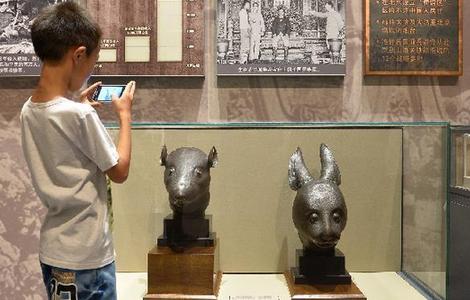
 Rat, rabbit head sculptures on display
Rat, rabbit head sculptures on display
 Russia jails opposition leader
Russia jails opposition leader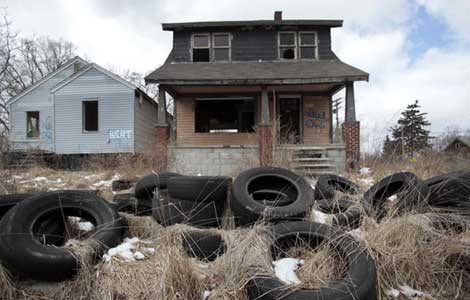
 Detroit files biggest ever US municipal bankruptcy
Detroit files biggest ever US municipal bankruptcy
 Plane crash victims' parents seek answers
Plane crash victims' parents seek answers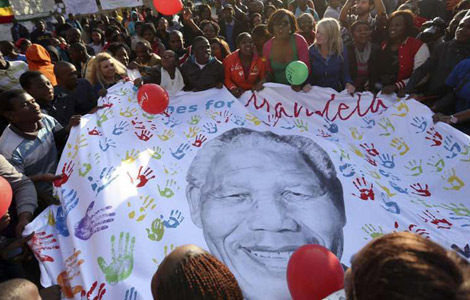
 'Improving' Mandela marks 95th birthday
'Improving' Mandela marks 95th birthday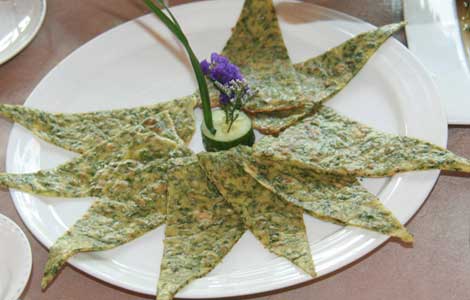
 Qingdao eatery finds use for pesky seaweed
Qingdao eatery finds use for pesky seaweed
 From university campus to boot camp
From university campus to boot camp
 FIFA head: World Cup in Brazil could be mistake
FIFA head: World Cup in Brazil could be mistake
Most Viewed
Editor's Picks

|
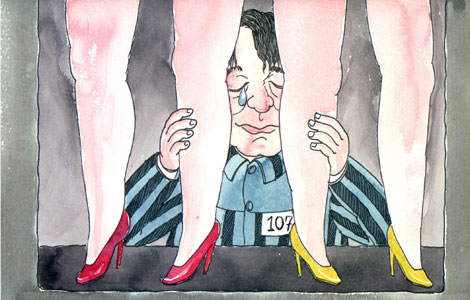
|

|

|

|
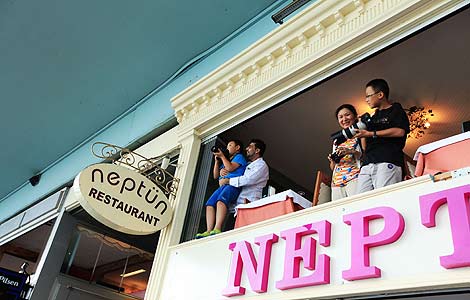
|
Today's Top News
Monetary system needs overhaul, says report
US companies seek tougher enforcement of IP laws
Syrian refugees demand help from Kerry at camp
Second iPhone shock leaves man in coma
China's government spends less in 2012
Pregnant Olympic runner dies, baby saved
Detroit files biggest ever US municipal bankruptcy
Obama weighs canceling Moscow talks with Putin
US Weekly

|

|
